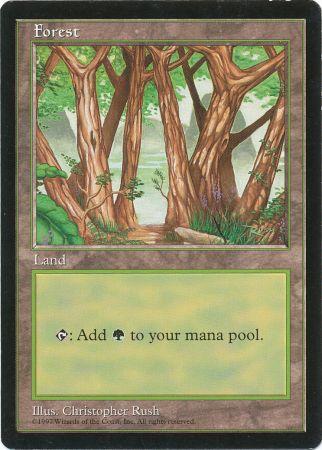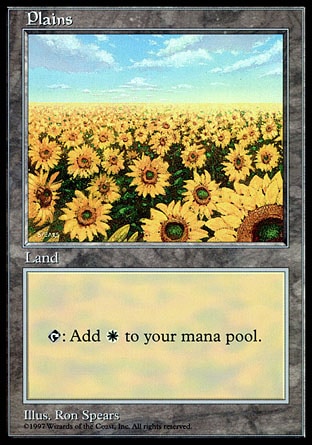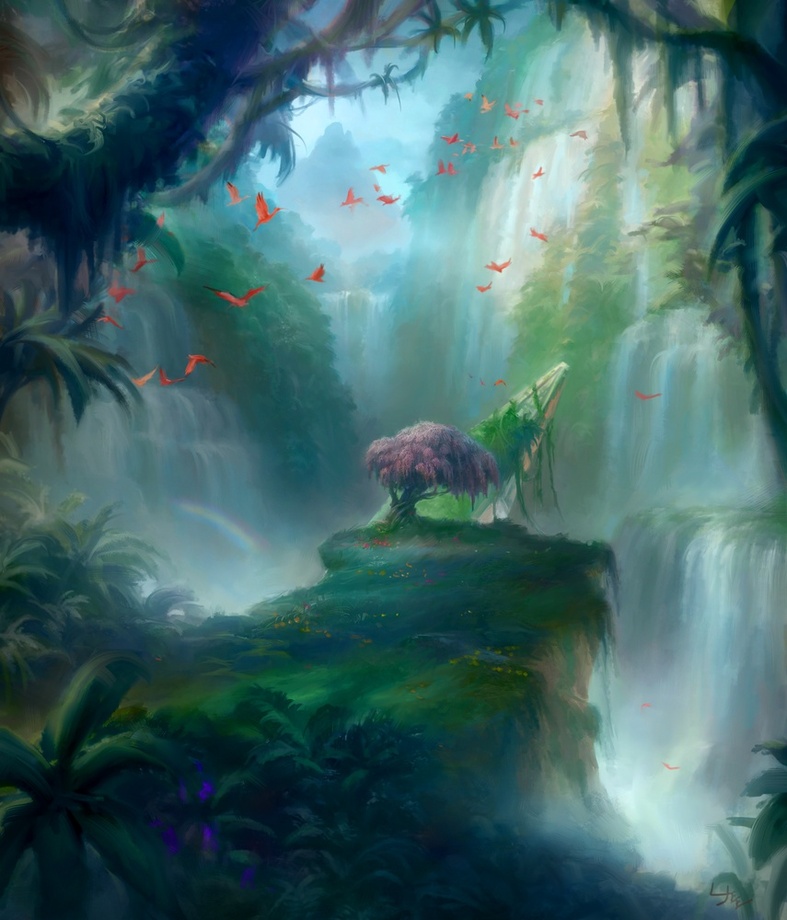Are you a Quiet Speculation member?
If not, now is a perfect time to join up! Our powerful tools, breaking-news analysis, and exclusive Discord channel will make sure you stay up to date and ahead of the curve.
In Magic investing certain types of cards hold the position of the "gold standard" in binders and portfolios all around the world.
Imagine a rough and extremely loosely rendered hierarchy looking something like this: Power Nine > blue dual lands > non-blue duals > enemy fetch lands > allied fetch lands > shock lands > Battle for Zendikar lands.
Yes, obviously cards that are more expensive than other cards are, well, more expensive...
Consider though, when we think about card value we often use these archetypes to assess and determine the prices on everything else. These types of cards are essentially the "gold standard" of Magic collecting and investing---because they are the most-traded cards they sort of set the price ranges for everything else!
When I look at a new card and try to assess how valuable it is I'm often thinking (either consciously or unconsciously) whether it's worth more or less than a Standard-legal dual land, shock land or fetch land. It gives us perspective for what price range a card will ultimately end up in.
When I got back into playing Magic back during Mercadian Masques the landscape of Magic finance was very different than today. Power 9 was about $100+, dual lands were in the $5-$10 range and fetch and shock lands didn't even exist yet! Can you imagine?
The top end for cards was about $150 for Black Lotus, $100 for Power, $50 for Library of Alexandria, $30 for Mana Drain, $15 for the very best Extended and Standard Staples and so on and so forth. The hierarchy of prices looked this way for a long portion of Magic's history.
The fact of the matter is that certain types of cards settle into certain kinds of price points. The highest-caliber cards set the tone for everything else and constitute a point of departure for conceptualizing value.
We do this all the time, often intuitively and reflexively. "Would I trade that brand new Archangel Avacyn for a Canopy Vista? No, that doesn't seem right... Okay, how about a Steam Vents? No, still not good enough... Alright then, how about a Polluted Delta? Yeah, that seems about right."
Even without knowing the exact fluctuations of prices, a powerful, highly anticipated mythic rare has to be worth more than a shockland but probably less than a Verdant Catacombs. Feels like it's worth about a Polluted Delta from Khans...
Profiling the Categories
Based on what seems plausible I'd establish price points for trading these categories of cards to look something like this:
- Power: $400+ (also Beta duals, Workshops, and all the other super expensive rare stuff)
- Blue Duals: $200+
- Non-Blue Duals $100+
- Zendikar Fetches $50+
- Khans Fetches $25+
- Shock Lands $10+
- Standard Duals $5+
Now, these numbers don't exactly match up with reality. Not exactly... But, I'm going to make the case that they should and that may be an indicator of where prices will end up.
I've basically laid out a model where the prices from one tier to the next roughly double---there is a reason for this.
Trading. I'll trade you two Sunken Hollows for a Watery Grave. I'll trade you two Watery Graves for a Polluted Delta. I'll trade you two Polluted Deltas for a Verdant Catacombs. I'll trade you two Verdant Catacombs for a Taiga. I'll trade you two Taigas for a Tropical Island.
It doesn't work out exactly once we get further up the totem pole since a 20% difference on a $200 price range card is equal to a lot of Canopy Vistas! However, for the purposes of creating categories for cards, I think it holds to be fairly true that card categories tend to settle into these doubling archetypes.
It is also true that cards tend to want to settle into these price points. A card rises in price until it hits one of these points and then sits stable for a while. Think about it. Pretty weird, right?
I'm not saying there is some system in place that makes certain cards worth certain amounts of money. Rather, I think this sort of "doubling" appears in the price patterns because it makes intuitive sense to buyers and traders.
It isn't something I can prove, or that even needs to be proved. Rather, it is an observation about how cards tend to end up being priced and a possible explanation for why this is the case.
Using Universal Doubling to Predict Trends
One thing to keep in mind, and something that I tend to believe is true, is that some generic "archetype card" needs to occupy every relevant price point space.
Fetches Continuing to Rise in a Rotation Market?
It seems odd to predict that a card rotating from Standard is likely to go on the rise. Albeit there will be an immediate, and likely only slight price dip for fetches as many players look to dump them and reinvest in Shadows over Innistrad cards. However, the cards that become available in this "buyer's market" will be very quickly and hungrily snatched up---and the prices will quickly go back up.
I know it is kind of strange to predict this, especially on the eve of Khans fetches rotating out of Standard, but the way I have laid out this model it seems like Khans fetches should rise in value to occupy the price point between $25 and $50. Maybe there could be a "swap-o-rama" where shocks leap-frog fetches and the two trade places?
However, the price point around $25+ feels like it is shaky right now, waiting for something else to settle in and replace it as the "gold standard" of $25 cards. I'm not going to bet against what feels right. I'm continuing to hold onto Khans fetches and believe that after a slight rotation dip they will get back to the business of making me money.
Non-Blue Dual Lands Undervalued?
According to the price scale I've laid out I'm apt to believe that the lowly non-blue dual lands are currently underpriced. Cards like Plateau and Badlands hold a very modest price tag when compared to cards like Bayou. These cards have demand and are on the Reserved List.
My thought process is that we are likely to see all of these cards push well over the $100 price point.
True, demand for these cards for tournament play is much lower than some of the more popular Legacy and Vintage staple duals---however, I suspect there is more buying interest in these cards right now than in the past. In particular, savvy investors looking to corner Reserved List cards, and the growing market of the "less newbish" casual players.
There are a lot of people who play casually with friends at the kitchen table but are actually decent at Magic and want to play real decks with real cards. Seriously, this is a thing... Semi-competitive casual players, and they buy a lot of cards. Duals are for sure in the equation for these types of players.
APAC Lands Are Sweet
One last little bit of free advice.

I think the APAC lands are sweet and I'm not the only one. They look fantastic and are actually quite uncommon for the price tag they currently command. Many of these fantastic basic lands only command $5ish price tags. I don't think this kind of price point is long for this world.
The gap between the lowest ones and the highest ones is pretty large, with the latter landing in the $25-$30 price range.
It is also worth noting that the APAC's with the highest price point are extremely cool-looking and have iconic art for basic lands:

Seriously, is this not one of the coolest-looking basic lands you've ever seen? If GURU lands can be $200 each I think basics like these (which are in my opinion much cooler) are an absolute steal. I feel like they have a lot of room to grow. There will always be high demand for cool and unique basics.
After all, lands have always been the gold standard currency of Magic.






Interesting theory. I can see how using some basic economic theory this could work out. Imagine that the easiest way to acquire cards is through trading…a system in which it is hard to trade fractions of cards…then it might be too costly to players in terms of frictions to trade at awkward price points that do not give nice ratios. This would cause all prices to settle at convenient price points.
For anyone that played Diablo 2, this happened in that economy. The currency was at one point a Stone of Jordan (SOJ). Items were worth some multiple of an SOJ, or a half, etc.
I was worried this article would come across as tedious or not make sense, but you’ve totally picked up on what I was trying to communicate here. And the fractions example is perfect, if I would have thought of putting it the way you did I would have! Thanks.
Great Article. How much do you think the fetches will dip? And should we have seen that dip yet, or will that start after actual rotation? Do you think the current buy in around 18-20 is acceptable?